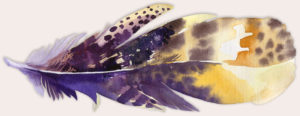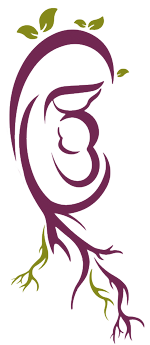
The Tools I Work With
Over my 33 years of life, I’ve acquired a variety of techniques that I utilize in my clinic. However, it’s important to note that none of these methods, on their own, define who I am or my therapeutic approach. They are merely tools in my toolbox.
The most authentic tool I have comes from the gift I received when I focused on my own healing. It was when I combined what I learned in theory with a commitment to change within myself that I truly understood what was happening inside me. Experiencing deep healing in my own body gave me firsthand insight into the process I often talk about.
![]()
This perspective enables me to create a healing space for others, where you can embark on your own journey of self-healing. In each session, I start by genuinely listening and observing, connecting with your experiences, and engaging with your inner child.
Just as every child is unique, every session is personalized and tailored to your specific needs in the moment and your unique journey of inner healing.
But for the sake of formality, here are some tools…
![]()
Trauma Work in Therapy
Trauma work in therapy addresses the deepest layers of pain and blockages left by trauma in both the body and mind. This approach fosters a new understanding of ourselves by integrating the body and mind together. When we confront this pain, we focus not only on the emotional trauma but also on how it manifests physiologically within the body.
In therapy, we work on increasing awareness of the body and its sensations. We focus on the areas where trauma has left its mark, beginning the process of emotional and physical release. Techniques such as deep breathing, gentle movements, and somatic approaches help to release accumulated tension, transforming pain into experiences that promote healing and growth.
I create a safe and supportive space for you, where you can express yourself and face your pain with gentleness and acceptance, no matter how tragic the life events may have been. Here, you can find safety, feel protected, and confront your most painful experiences. This process is designed to reduce anxiety and fear while establishing a sense of stable inner security.
In the integration phase, we bring the emotional and physiological insights gained during therapy into our daily lives, building an internal support system that helps you face future challenges in a healthier, more resilient way.
Trauma work offers not only relief from pain but also the opportunity to feel free and empowered. As we release the burden of trauma, the quality of life improves, allowing you to rediscover your ability to live independently, freely, and fully.
Hakomi
I am a graduate of Hakomi training and a therapist practicing in alignment with this approach. Hakomi is a mindfulness-based psychotherapy method that integrates three main streams: classical psychology, experiential somatic psychology, and transpersonal psychology.
The core principles of this method include mindfulness, non-violence, unity, organicity, and the holistic connection between mind, body, and spirit. These principles create a safe, accepting space where you can experience unconditional love and self-acceptance.
Through the Hakomi method, I guide you to deeply and authentically experience your body and mind. Here, every breath, every movement, and every glance serves as a gateway to explore your unconscious and strengthen your connection with your body.
In Hakomi therapy, I observe your body’s responses—posture, breathing, gaze, and subtle movements—with the intention of naturally revealing unconscious material, without pressure or force. This method allows you to explore memories, emotions, and core beliefs that originated in the past, and work with them consciously and lovingly. In this way, you can learn to offer compassion to your inner child, open yourself to nurturing inner parenting, better understand yourself, and build a new foundation based on love and self-acceptance.
Throughout our work, we will examine the beliefs formed as adaptive responses to past life experiences. Together, we will identify and transform behavioral patterns, memories, habits, and both physical and emotional responses. This approach helps you understand your true needs and teaches you how to meet them in a healthy, loving way.
The Hakomi method returns you to a safe, nurturing space—like a womb that offers support, security, warmth, and unconditional acceptance. This resonates deeply with my personal values and what I aim to bring into the world as a therapist: treatment that embraces the whole person and addresses all aspects of their life with simplicity and love.
I find the Hakomi approach to be the most aligned with my beliefs, my mission as a therapist, and my gentle, compassionate approach to the life that exists within us. For me, it is the most effective path to healing I’ve encountered. I invite you to join me in this work with the Hakomi method and discover the greatest gift of all: a healing process that embraces every part of who you are.
Psychodrama
Omanitherapy
Omanitherapy is a therapeutic approach that strengthens the connection between the body and mind, based on the idea that the body holds the key to understanding our emotional and mental processes. Through this method, we explore and treat internal issues by focusing on physical sensations and experiences.
The method is built on the understanding that the body stores life experiences, emotions, and memories, leaving a physical imprint. In Omanitherapy, I combine knowledge from psychotherapy and psychology with bodywork, emphasizing the connection between your inner experiences and physical state.
What the method offers:
Body-Mind Connection: Omanitherapy focuses on the deep link between the body and mind, acknowledging that physical tension, blockages, and sensations often reflect emotional issues stored in the subconscious. It’s a journey of self-discovery through the body, leading to new insights about your inner processes.
Experiential and Physical Work: By working through physical experiences, Omanitherapy helps you connect with deep emotions and face pain and fears in an authentic way. The physical work accelerates emotional healing, giving you deeper access to your internal world.
Acceptance and Compassion: This method is based on unconditional acceptance and love. I will guide you with compassion and without judgment, providing a safe space to explore and address your inner struggles.
Emotional Blockage Release: Together, we work to release physical and emotional blockages linked to past experiences. These blockages become insights, leading to meaningful healing and change.
The Body as a Source of Knowledge: Omanitherapy helps you tap into the wisdom of your body, revealing the root causes of physical and emotional symptoms. It’s a deep exploration of the body’s experiences that leads to healing and transformation.
In summary, Omanitherapy is a path of self-discovery through bodywork. The goal is to understand and heal the root of emotional and mental challenges, leading to a higher, more fulfilling quality of life.
Emotional Release & AUM Meditation
I gained the knowledge and tools for working with emotional release during my training as a facilitator of AUM Meditation at the Humaniversity in the Netherlands.
In AUM Meditation, we dive deep into self-exploration, experiencing the full range of our emotions—anger, sadness, madness, love, silence, laughter, and more.
Over my 8 years as a practitioner, this meditation has helped me confront my barriers and defense mechanisms, break through them, and dive deeper into my being.
Today, I incorporate many tools from this meditation into my therapy practice and workshops, creating a space for exploration where we learn to understand ourselves by embracing the full spectrum of our emotions.
Shamanism
Nature holds all the layers of existence and endless wisdom—
masculine and feminine,
sunrise and sunset,
the four elements,
the changing seasons…
All of these are reflected when we live in harmony with our natural way of being.
Incorporating Shamanism into my work allows us to tap into this natural wisdom. By observing nature, both outside and within us, we can start to understand ourselves, our place in life, and the next step that feels most true.
When we recognize our part in the ever-turning wheel of life, we can make peace with our reality and accept whatever season we are in—whether high or low, just as a tree doesn’t resist when its leaves fall in autumn. In times of vulnerability, it becomes easier to understand this lesson and our deep connection to nature, allowing us to feel the one network that unites us all.
I have been studying and practicing Shamanism for over a decade. Throughout this journey, I have held rituals, worked with plant medicines, and experienced realms beyond what the eye can see.
TLT, NLP, and Guided Visualization
As part of my studies at Retter College, I completed the NLP Master Practitioner curriculum, including Time Line Therapy (TLT) and Guided Visualization. NLP (Neuro-Linguistic Programming) is a method that helps us change how we see ourselves and, in turn, change our behaviors. This allows us to make meaningful changes, reach our goals, grow, and create a better life. It works by accessing the subconscious and creating lasting change by connecting with parts of ourselves that we don’t usually engage with.
TLT is an intensive process, lasting 8-12 hours, that helps us dive into the core wound holding us back in life, preventing happiness and growth. Developed by Dr. Ted James and based on NLP therapy, this method has a proven track record of success, even in cases of addiction and deep emotional wounds from complex childhood trauma.
Guided Visualization combines relaxation techniques with verbal guidance, using the power of imagination to approach problems from a new perspective and bring healing. This technique quiets the thinking mind and gives us access to the subconscious, where we can receive meaningful messages, release internal barriers, and find new solutions to the challenges we face.
Radical Honesty – Group Work
Rebirthing
If you observe babies, you’ll notice their breathing is soft and smooth, with almost no pause between inhaling and exhaling. Oxygen flows naturally through them. As we grow older, this changes.
As children, we don’t always know how to process intense emotions or traumatic events. In those moments, our breath can be interrupted, and emotions like pain, fear, panic, and anger are suppressed into the body rather than being expressed and released.
These emotions don’t disappear—they stay stored in our cells, waiting for the moment we’re ready to confront them.
Rebirthing, or circular breathing, is a technique developed by Leonard Orr. It allows us to access unprocessed emotions, even from birth trauma. The energy created by continuous breathing helps us tap into these buried experiences (sometimes without knowing what they are), express them, heal them, and transform them in ways we couldn’t when they first appeared.
Circular breathing, where there is no pause between inhale and exhale, induces a state of hyperventilation, flooding the body with oxygen. This process brings release, opening, and healing to the areas in the body where emotions have been restricted.
Rebirthing is a powerful tool. During the journey, our defenses open a gate way, allowing us to access parts of ourselves that are usually guarded. This lets us bring out what has been held inside the body. Through Rebirthing, we can connect with our inner child in a vulnerable and open way, giving space to embrace all of our emotions in real time.


